The work of Victor Pasmore (1908–98) surely constitutes one of the most varied and experimental bodies of work produced by any 20th-century British artist, ranging as it does from 1930s interiors rendered in murky oils, to austere constructivist sculptures in Perspex and wood, to the weightless abstractions of colour he was producing towards the end of his life. From his beginnings as an amateur painter, attending evening classes at the Central School of Arts and Crafts, Pasmore quickly became a major figure in interwar representational art and a founder, with William Coldstream and Claude Rogers, of the Euston Road School. After the Second World War, he famously renounced figurative painting in favour of an ever-evolving series of geometrical forms and constructivist assemblages, which he sometimes identified as ‘abstracts’, ‘motifs’, ‘variations’ or ‘developments’.
‘Victor Pasmore: Towards a New Reality’ at the Djanogly Gallery, Lakeside Arts (travelling to Pallant House Gallery from 11 March–11 July) helps to give a much fuller picture of Pasmore, whose career has too often been divided straightforwardly into two quite separate periods of representation and abstraction. From the works collected here there emerges a slightly different and more nuanced account of an artist who, in painting after painting, year after year, was testing new possibilities and trying new styles, rejecting some elements and incorporating others, attempting to see for himself how the complexities of a fully realised image might emerge from, or be broken down into, highly abstract formal structures of shape and rhythm and colour.
The four rooms of the exhibition are laid out in roughly chronological sequence, with an emphasis on the restless experimentation of Pasmore’s career up to the mid 1960s. In the first room are early works, including The Bradman Still Life (1926) and The Life Class (1938), which give an early indication of Pasmore’s willingness to learn from, react against, and develop the work of other artists before moving on to assimilate new styles and forms. The influence of the Camden Town Group is much in evidence, in the interiors and portraits, as is that of Turner and Whistler when Pasmore turns to landscape.
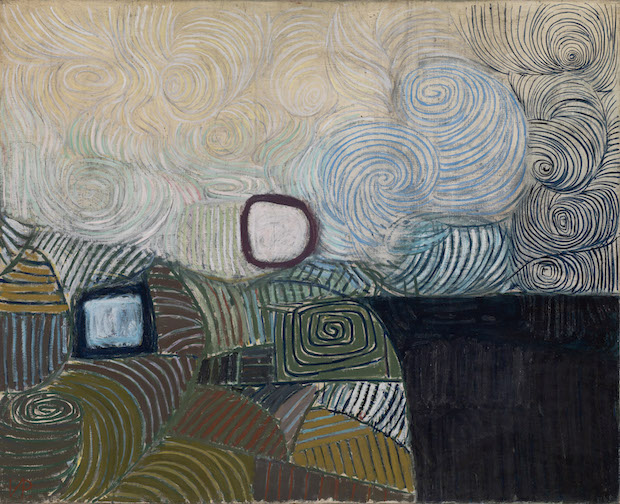
Spiral Motif in Green, Violet, Blue and Gold: the Coast of the Inland Sea (1950), Victor Pasmore. © Tate London 2016
Even so, surrounded by these early works, you can’t help but register the presence, in another room, of a completely different kind of painting. Located in the final space of the exhibition, but looking back to greet the entering visitor in the first room, the whirling dynamism of Spiral Motif in Green, Violet, Blue and Gold: the Coast of the Inland Sea (1950) foreshadows the radical turn Pasmore’s art would later take. The curators have used the layout of the Djanogly Gallery to excellent effect; the crude, almost childish spirals of the later work make an extraordinary contrast with the formality of the earlier paintings, and anticipate the abstract and constructivist works that are to come.
Such inventive juxtapositions are one of the exhibition’s strong points, helping to articulate the many phases of Pasmore’s work without downplaying the strangeness of his shifting styles. Between the room containing Pasmore’s earliest paintings and the final room, where the abstracts and constructions of the 1960s are displayed, the exhibition takes a turn down a narrow passage to a second pair of rooms containing works from the war years (when Pasmore, a conscientious objector, was briefly imprisoned) and from the post-war, when he broke with representational art altogether. Some liberties have been taken in the ordering of the works for the sake of highlighting continuities between earlier and later periods, and these are generally illuminating. It makes perfect sense, for instance, to hang the interior Lamplight (1941), with its central spray of flowers in a jug, beside later still lives like Roses in a Jar (1947) and Carnations in Vase (1948), where a heightened concern for rhythmic pattern and geometric shape becomes visible in the midst of the organic forms.
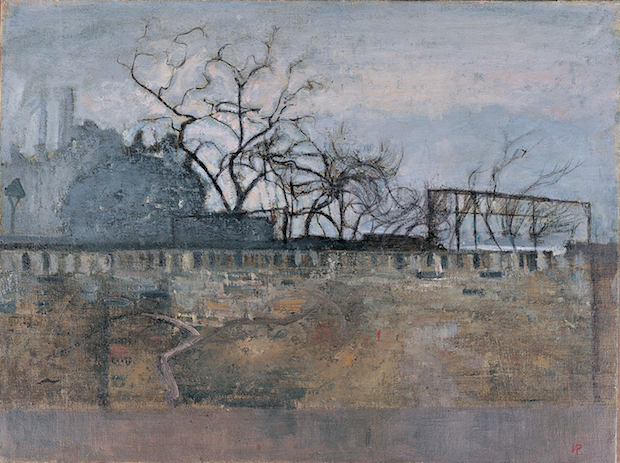
Hanging Gardens of Hammersmith (1944–47), Victor Pasmore. © Estate of Victor Pasmore. All rights reserved DACS
Perhaps the most effective juxtaposition in the exhibition, however, is the leap between the rather dull Riverside Gardens, Hammersmith (c. 1944) and the startling Gardens of Hammersmith No. 2 (1949). Suddenly, Pasmore seems to leave behind almost all the figurative aspects of the visible scene; only the scrawl of tree branches and the pointillist swarms of foliage remain in the midst of utter white-out. If the experiment seems suddenly shocking after so many dutiful realist and impressionist exercises, this is, perhaps, to exaggerate the suddenness of the break: the intermediate picture – Hanging Gardens of Hammersmith, No. 1 (1944–47) – is not on show. In practice, however, the absence only serves to highlight the distance covered by Pasmore as an artist in a very short period, and to demonstrate the increasing importance of abstraction even within works which were, at least in their origin, tied to depictions of visible scenes.
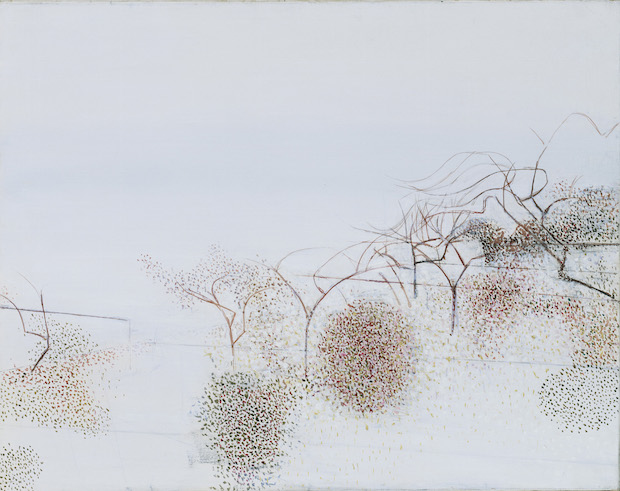
The Gardens of Hammersmith No. 2 (1949), Victor Pasmore. © Tate London 2016
The subsequent geometries of the later 1940s, on the other hand, seem to me to be among Pasmore’s less successful experiments. It’s hard to imagine now that these fuzzy building blocks could have been what Herbert Read had in mind when he called Pasmore’s move into abstraction ‘the most revolutionary event in post-war British art’. They are, perhaps, overrepresented. The display of Pasmore’s public works, on the other hand – his influential mural for the 1951 Festival of Britain, and his work on the Apollo Pavilion at Peterlee in 1969 – seems if anything a little rushed in a final room mostly devoted to the interplay between relief constructions, experiments in shape and colour, and explorations of linear forms.
An argument could also be made for the inclusion of a little more contextual material: the exhibition’s captions contain a wealth of information about Pasmore’s theoretical reading in works ranging from D’Arcy Wentworth Thompson’s influential On Growth and Form (1917) to J.W. Power’s z – Les Éléments de la Construction Picturale (1932), and it would not have taken much to make clear some of the specific connections between these works and the practical results they inspired. Fortunately, the excellent catalogue helps to triangulate Pasmore’s theoretical and practical concerns in a set of essays on his early works, on the abstract and constructivist productions of his middle period, and on his public and environmental projects.
‘Victor Pasmore: Towards a New Reality’ is at the Djanogly Gallery, Nottingham Lakeside Arts, until 19 February. It tours to Pallant House Gallery, Chichester, from 11 March–11 June.
From the February 2017 issue of Apollo. Preview and subscribe here.
Unlimited access from just $16 every 3 months
Subscribe to get unlimited and exclusive access to the top art stories, interviews and exhibition reviews.

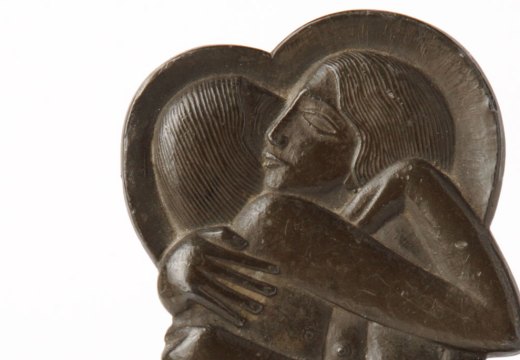
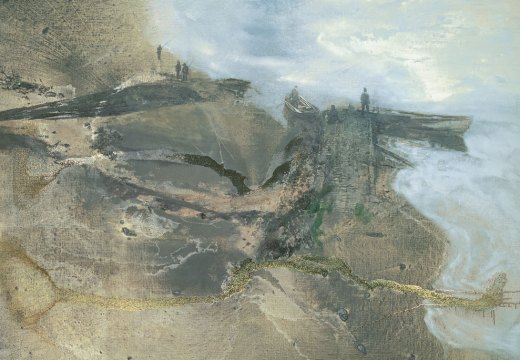
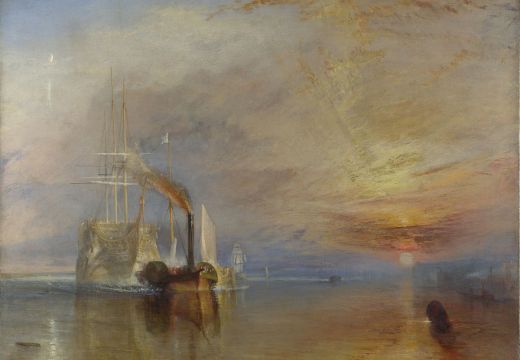









![Masterpiece [Re]discovery 2022. Photo: Ben Fisher Photography, courtesy of Masterpiece London](http://www.apollo-magazine.com/wp-content/uploads/2022/07/MPL2022_4263.jpg)
Has the Fitzwilliam lost the hang of things?